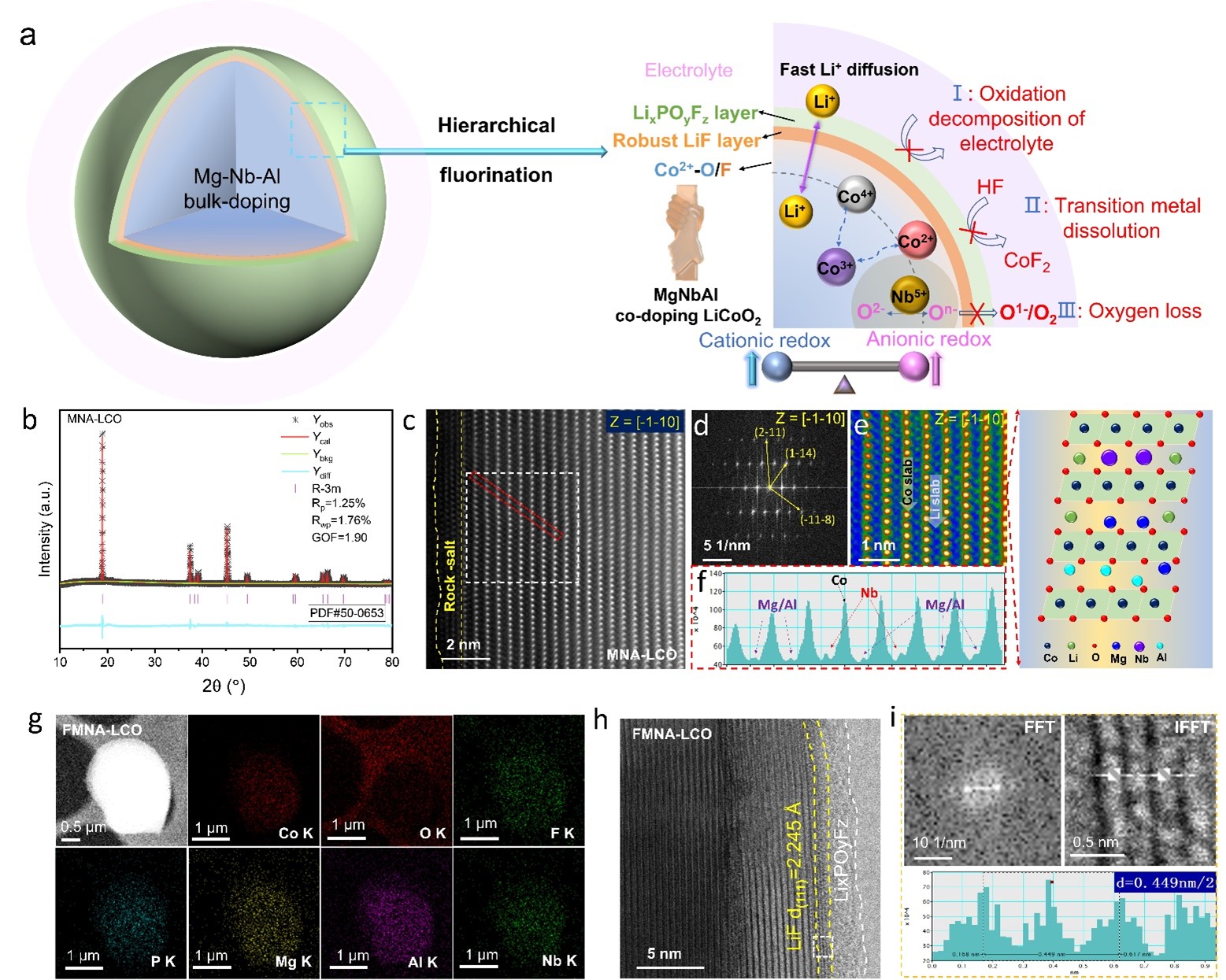Z.H. Bi †, Z.L. Yi †, A.P. Zhang, C. Dong, G.R. Wang, L.J. Xie, S.H. Liao, H.Q. Liu, C.M. Chen * and Z.-S. Wu *
Energy & Environmental Science, 2024, 5706.
DOI: 10.1039/D4EE01674B [PDF]

Achieving highly reversible anionic redox reactions (ARR) in high-voltage LiCoO2 (LCO) is critical for increasing power/energy density but still lacks a reliable tuning strategy. Herein, we report a comprehensive surface-to-bulk tunning deep delithiation strategy by coupling trace Mg-Nb-Al Li-layer co-doping with ultrathin interfacial hierarchical fluorination interphase, featured by a unique ultra-thin double-layer cathode electrolyte interphase structure of 1 nm-thick LiF-rich inside layer and an outer 2 nm-thick LixPOyFz layer, to extremely stabilize fast charging of 4.6 V-LCO. The slight cation disorder induced by Li-layer co-doping synergistically confined interfacial hierarchical fluorination enhances the bulk-to-surface anion/cation redox process of LCO and suppresses interfacial side reactions during fast-charging cycles, and Mg-Nb-Al pillars strengthens the layered lithium diffusion channels. Consequently, our LCO achieves a record reversible capacity of 198 mAh g-1 and 77.8% capacity retention at fast-charging 5 C after 500 cycles. The assembled graphite||LCO pouch cell demonstrates the state-of-the-art cyclability with virtually no capacity decay after 1400 cycles at 5 C charge and 10 C discharge. It is theoretically unraveled that suppressing oxygen electronic holes generation through a Nb5+-induced high spin-polarized weak Co-O octahedral crystal field is the key to highly reversible ARR in 4.6 V-LCO. This work provides a design guidance for achieving reversible deep delithiation of high-voltage LCO.